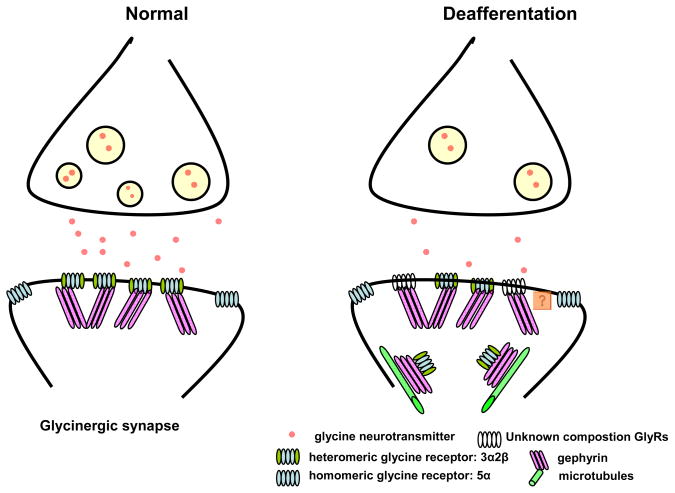Figure 7.
Plastic changes of glycinergic synapses over fusiform cells in DCN following sound exposure. Glycine neurotransmitter releases from presynaptic terminals act on postsynaptic heteromeric and extrasynaptic homomeric GlyRs under normal conditions (left panel). Gephyrin represents an anchoring protein which directly interacts with the large intracellular loop of GlyR β subunits. Due to sound exposure induced peripheral auditory deafferentation, there may be less glycine release from presynaptic terminal to fusiform cells in DCN (right panel). As a compensate response, numbers of postsynaptic membrane GlyR decreased and/or receptor composition change due to unknown subunit switch. Not only as anchoring proteins, gephyrin may serve as the intracellular retrograde transport adaptor that links GlyRs with the microtubule dependent dynein motor complex to remove abnormal functional GlyRs from postsynaptic membrane.

